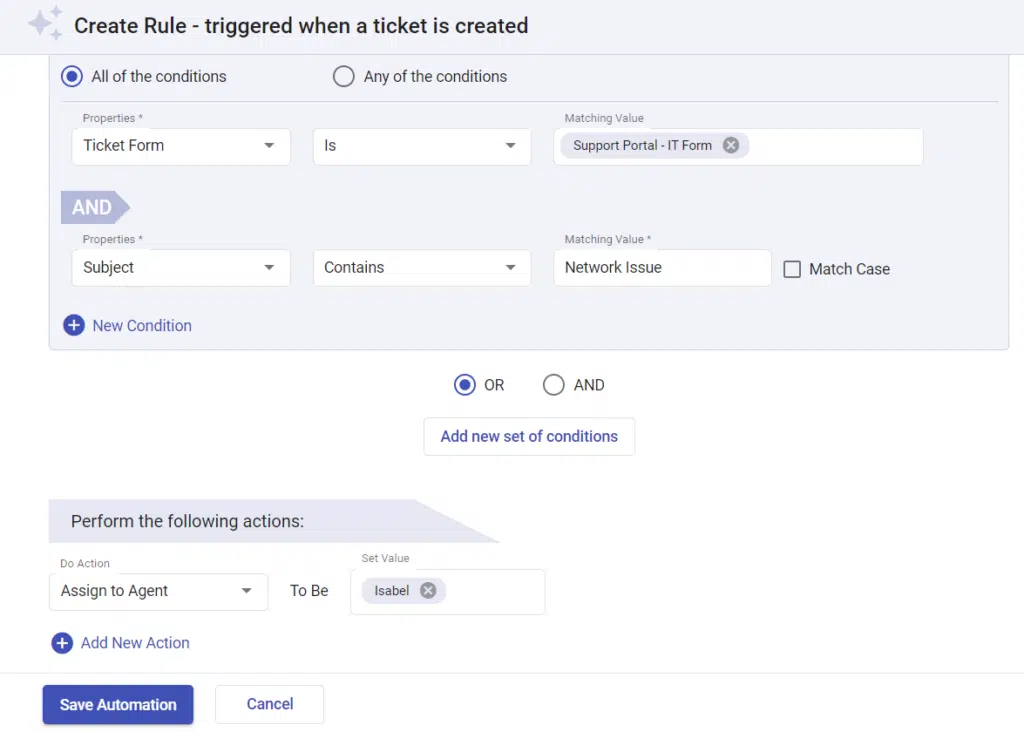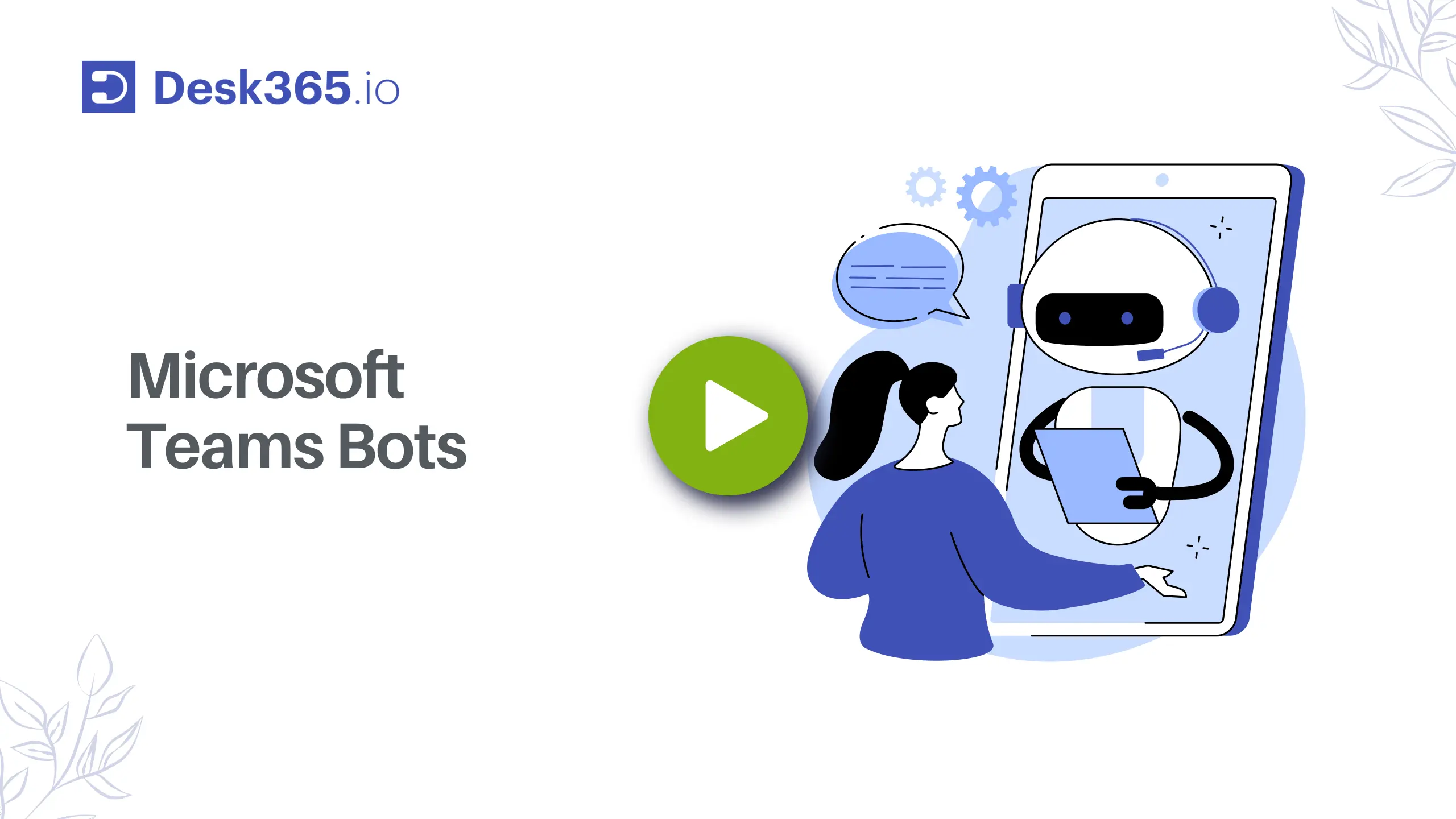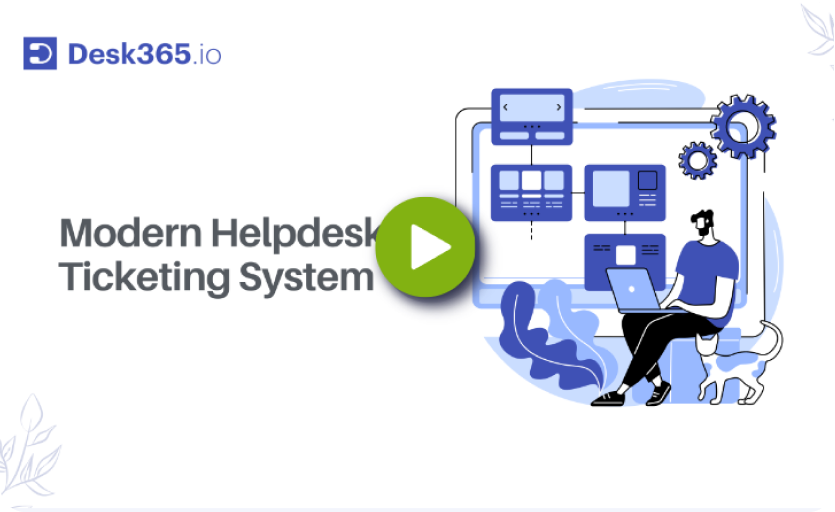Customer service teams are driven by a single goal: to provide exceptional support and ensure every customer leaves satisfied. But when your support ticket volume soars into the hundreds or thousands, that goal becomes harder to reach.
In fact, studies show that 67% of customers hang up the phone or abandon a support request if they have to wait too long, and 60% of customers have had to contact a company multiple times to resolve a single issue.
With a backlog of tickets piling up, agents can quickly find themselves overwhelmed by repetitive inquiries, leaving little time for the more complex, personalized support that truly delights customers. This not only impacts the quality of service but also leads to longer resolution times and frustrated customers.
Reducing support ticket volume is key to improving support efficiency and customer satisfaction. By addressing common issues proactively and streamlining support processes, you can help your team focus on high-priority cases, ultimately providing faster and more effective service. Let’s explore some strategies to achieve this.
Challenges faced when you have high ticket volume
Here are some of the most common hurdles, along with how they affect both teams and customers:
1. Delayed response times
When tickets pile up, the time it takes to acknowledge and resolve each one naturally increases. This delay can frustrate customers and tarnish the company’s reputation.
2. Overworked support teams
A high influx of tickets can lead to burnout among support staff. They may feel pressured to rush through responses, which can result in mistakes or lower-quality support.
3. Difficulty prioritizing tickets
With a massive queue, it becomes harder to identify and prioritize urgent issues. This can lead to critical problems being overlooked while less important ones take up time.
4. Decreased customer satisfaction
Customers expect quick and effective resolutions. Long wait times or rushed, ineffective responses can lead to dissatisfaction, complaints, and even lost business.
5. Increased escalations
High ticket volumes often lead to more cases being escalated, putting additional strain on specialized teams or higher-level management.
6. Struggles with automation
While automation tools can help manage large volumes, poorly configured systems or a lack of strategy may lead to irrelevant responses, compounding customer frustration.
7. Limited insights and analytics
An overloaded ticket system can make it difficult to extract meaningful data. Trends, recurring issues, or potential areas for improvement may go unnoticed amid the chaos.
8. Impact on team morale
Constantly dealing with high volumes can lead to stress and dissatisfaction among support staff, which may affect retention and overall team dynamics.
How to reduce your customer support tickets?
Here are 11 proven strategies to help you streamline your support ticket management and ease the workload for your customer support team.
1. Implement a self-service portal
A self-service portal is a powerful tool for reducing support ticket volume by enabling customers to resolve issues on their own. By offering a robust knowledge base, FAQs, tutorials, and troubleshooting guides, customers can find solutions to common problems without needing to contact support. This not only empowers customers to find answers at their convenience but also helps reduce reliance on support teams for repetitive, basic inquiries.
A well-structured self-service portal can dramatically cut down ticket volume and improve overall customer satisfaction, as users feel more in control and informed.
Desk365 is a modern omni-channel ticketing system that enhances customer support and promotes self-sufficiency through robust self-service features.
Its internal knowledge base serves as a dynamic training resource for agents, while public solution articles empower customers to resolve issues independently, reducing the need for direct support.
Version control ensures content accuracy, keeping articles up-to-date and reliable. The multi-brand knowledge base allows tailored help-center portals for different customer segments, improving user experience and optimizing resources.
Additionally, the customizable customer support portal enables customers to manage tickets and access solutions seamlessly, reinforcing professionalism and brand loyalty.
Read more – Setting up Knowledge base article in Desk365
2. Categorize and prioritize tickets
A structured approach to managing support tickets is crucial for reducing backlog and improving efficiency. Categorizing tickets by issue type (e.g., billing, technical, account-related) and prioritizing them based on urgency (e.g., critical, high, low) allows support teams to focus on the most important issues first.
This organization streamlines ticket management, ensures faster response times for high-priority cases, and helps reduce the overall volume of open tickets. It also enables support teams to allocate resources efficiently and avoid delays in resolving urgent matters.
Desk365 offers ticket routing solutions that streamline your support process, allowing your helpdesk to handle a high volume of tickets without compromising service quality.
In the past, ticket routing was done manually. Now, with automation, tickets are routed faster and more accurately. Automation rules can be set up to direct tickets based on certain criteria, such as ticket content or keywords, ensuring that the right agent gets the ticket without human intervention.

3. Create an effective ticket routing system
An intelligent ticket routing system can significantly reduce ticket resolution time and improve overall efficiency. By automating the process of categorizing and assigning tickets based on their type, urgency, and the skill set required, you ensure that each support agent is working on the right tasks.
This automation reduces the time spent manually sorting and routing tickets, minimizes errors, and speeds up response times. As a result, the team can handle more tickets in less time, reducing the backlog and improving overall support efficiency.
This organization streamlines ticket management, ensures faster response times for high-priority cases, and helps reduce the overall volume of open tickets. It also enables support teams to allocate resources efficiently and avoid delays in resolving urgent matters.
A well-structured self-service portal can dramatically cut down ticket volume and improve overall customer satisfaction, as users feel more in control and informed.
Desk365 offers ticket routing solutions that streamline your support process, allowing your Helpdesk software to handle a high volume of tickets without compromising service quality. By leveraging the ticket routing methods, Desk365 helps you improve first response times, ensure fair ticket distribution, and ultimately enhance the overall customer experience.
4. Offer multichannel support
Customers have different preferences when it comes to how they seek support, so offering multichannel support—such as Microsoft Teams, email, live chat, phone, and social media—ensures that customers can reach you in the way that’s most convenient for them. By providing multiple communication options, you can spread out the support load and avoid overwhelming any single channel.
Additionally, this flexibility helps reduce ticket volume by offering customers quicker and more diverse ways to resolve their issues, ultimately leading to higher satisfaction and fewer support requests.
5. Enhance customer onboarding
6. Empower customers with canned responses
Canned responses, or predefined answers for common issues, can speed up the resolution process for frequently asked questions. By equipping your support team with these templates, you can resolve repetitive inquiries more efficiently, reducing both response time and ticket volume. Additionally, this consistency in communication helps ensure that customers receive accurate, uniform information, improving the overall support experience and reducing follow-up queries.
Additionally, this flexibility helps reduce ticket volume by offering customers quicker and more diverse ways to resolve their issues, ultimately leading to higher satisfaction and fewer support requests.
Desk365 offers a canned responses feature that allows teams to easily create and manage their pre-written templates, making it simple to update and add new templates as needed.
Editing, deleting, and managing canned responses is also easy using a help desk solution. Teams can easily update existing templates if there are changes to the information or if the response needs to be revised. Additionally, new templates can be created as needed to address new situations or enquiries.
7. Provide regular product updates
Keeping customers informed about product updates, bug fixes, new features, or known issues is essential for reducing support tickets. Proactive communication through newsletters, in-app notifications, or automated emails can prevent customers from submitting tickets regarding problems that have already been addressed or are already known.
By informing users of changes before they encounter issues, you can reduce confusion and frustration, helping to maintain a smooth customer experience and lower ticket volume.
Well-structured onboarding not only reduces ticket volume but also boosts customer confidence, engagement, and retention.
Additionally, this flexibility helps reduce ticket volume by offering customers quicker and more diverse ways to resolve their issues, ultimately leading to higher satisfaction and fewer support requests.
8. Leverage community forums
Community forums are a great way to reduce support ticket volume by enabling users to help each other. When you establish a space where customers can share their experiences, solutions, and tips, you create a valuable knowledge-sharing ecosystem. Many users prefer getting answers from peers who have encountered similar issues.
By fostering a supportive community, you not only reduce the number of tickets submitted but also increase engagement and customer loyalty, as customers feel empowered to solve problems on their own.
9. Improve internal collaboration
A collaborative support environment can significantly improve ticket resolution time. By integrating your support system with other departments like sales, product, or development, you can ensure that tickets requiring cross-departmental input are handled quickly and effectively. This streamlined communication reduces the time spent transferring tickets between teams and enables faster resolution of complex issues.
Strong internal collaboration also ensures that agents have access to all the necessary resources and expertise to resolve issues efficiently.
By fostering a supportive community, you not only reduce the number of tickets submitted but also increase engagement and customer loyalty, as customers feel empowered to solve problems on their own.
10. Track and measure customer satisfaction
Regularly gathering feedback from customers after each support interaction allows you to track satisfaction levels and pinpoint areas for improvement. By identifying patterns in customer feedback, you can identify recurring pain points and address them proactively.
Additionally, customer satisfaction data can help you gauge the effectiveness of your support strategies, ensuring that your team is continually improving and that issues that cause repeat tickets are addressed.
This constant feedback loop leads to better service and fewer ongoing support requests.
Strong internal collaboration also ensures that agents have access to all the necessary resources and expertise to resolve issues efficiently.
By fostering a supportive community, you not only reduce the number of tickets submitted but also increase engagement and customer loyalty, as customers feel empowered to solve problems on their own.
By asking the right questions, businesses can tap into a deep well of information that reveals not just how customers feel about a product or service, but also why they feel that way.
The ultimate goal of any customer satisfaction survey should be to enhance the customer experience, thereby fostering greater customer retention and cultivating a base of loyal customers
11. Enable AI-powered chatbots
AI-powered chatbots are a valuable resource for handling common and repetitive queries, such as password resets, account updates, or feature explanations. By providing instant responses, chatbots allow customers to resolve simple issues on their own, drastically reducing the volume of tickets that require human intervention.
Over time, AI can learn from customer interactions and improve the accuracy and efficiency of responses, making it an increasingly effective tool for reducing ticket volume.
With the ability to handle routine tasks 24/7, chatbots free up support agents to focus on more complex inquiries.
Cut down ticket volume, enhance customer experience
Managing a flood of tickets can feel like an uphill battle, but it’s also a chance to show your customers—and your team—that you care.
By streamlining processes, using tools that lighten the load, and supporting your agents to avoid burnout, you can tackle the challenge head-on. At the end of the day, every ticket is a chance to build stronger relationships and show your customers they’re in good hands.
Take care of your team, and they’ll take care of your customers—it’s as simple as that!









